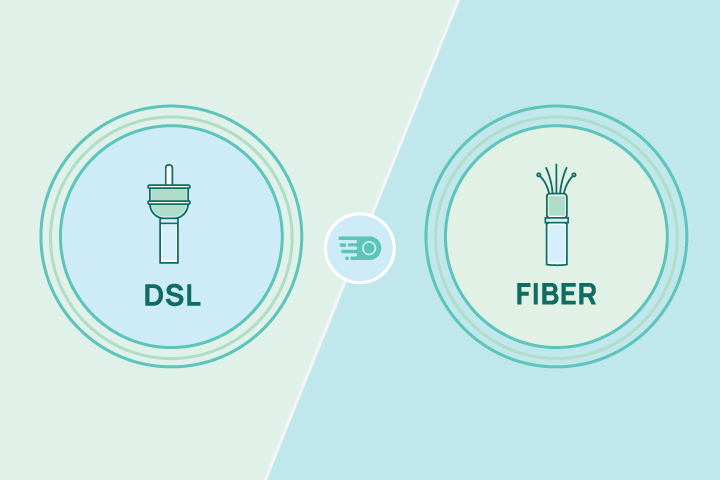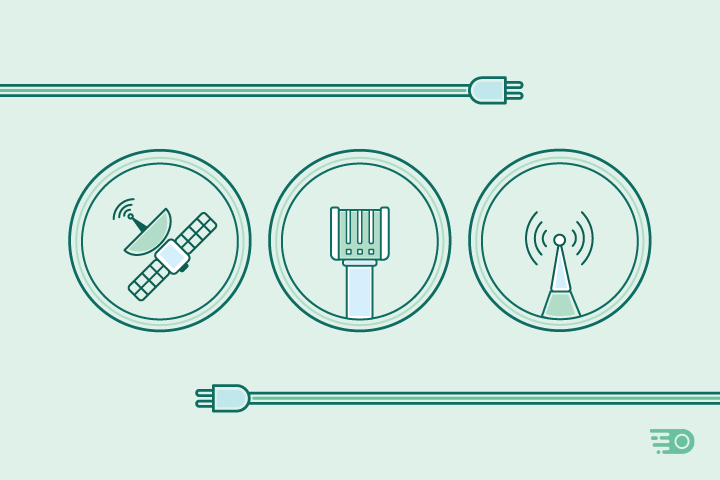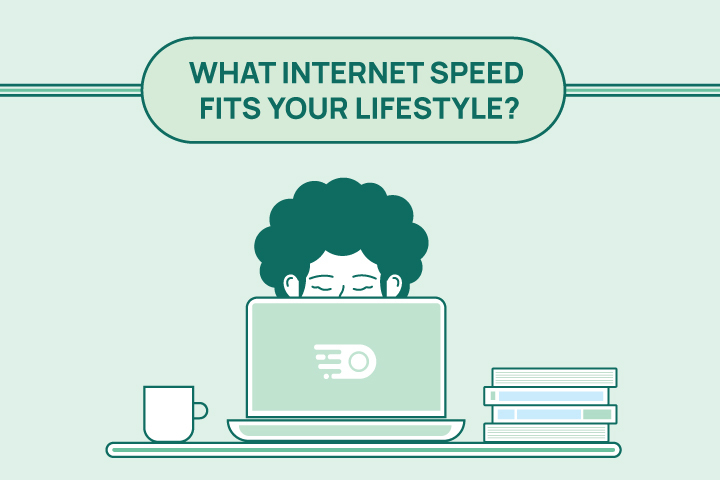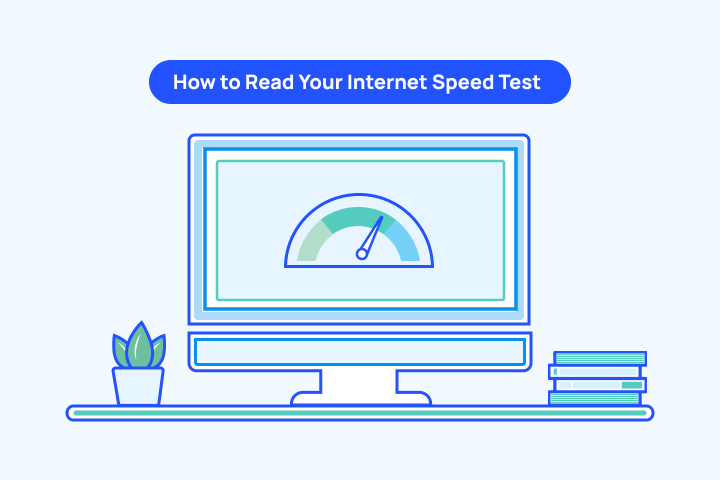Fiber vs DSL Internet: Main Differences

HighSpeedOptions prides itself on providing honest, quality content. While we may be compensated when you make a purchase through links on our site, all opinions are our own. Here's how we make money.
Table of Contents
There are a lot of options when it comes to choosing an internet provider. From knowing what providers are in your area to understanding what internet speed you need, there are many factors worth weighing to make your final decision. But what about internet connection type?
Wireless, DSL, cable, satellite, and fiber optic are just a few high-speed internet connections you’ve probably heard of, but probably don’t know how they differ, or which one might be best for your lifestyle. Don’t worry, you’re not alone. In this article, we’ll break down the differences so you can make an informed decision between fiber optic internet vs DSL internet.

What is DSL Internet?

DSL, or digital subscriber line, is an internet connection that transfers data using the copper telephone lines already installed in most homes and businesses. DSL separates connections from your phone, so you can use the internet and home phone at the same time — no dial-up tones needed.
How is DSL Installed?
To install DSL internet you will need a landline phone connection, a modem to receive internet signals, and a reliable internet router to connect those signals to your devices. DSL can be self-installed or done professionally by your provider.
What is Fiber Optic Internet?

Fiber internet is a connection that transfers data through fiber optic cables. These “cables” are thin, transparent glass fibers that transmit data that has been converted into light signals.
How is Fiber Installed?
Fiber installation is more complicated than DSL. First, you need to live in an area that offers fiber internet connections. If fiber is available in your area, the provider will bring fiber cables from their existing network to your home and a main fiber terminal will be set up in your neighborhood. An Optical Network Terminal connected outside of your house receives the light signals from the fiber optic cables and transfers the signals through an ethernet cable connected to a router, which then connects to your devices.
DSL vs. Fiber Speeds
DSL is one of the slowest internet connections, but is still faster than dial-up. On the other hand, fiber is the Usain Bolt of broadband internet — the fastest connection & speed available.
DSL Download Speeds: .5 – 35 Mbps on average
Good for activities like: light web browsing, sending and receiving emails, streaming videos on one or two devices, and light gaming
Fiber Download Speeds: 250 – 1,000 Mbps on average
Good for activities like: heavy internet usage, streaming HD or 4K videos on multiple devices simultaneously, online multiplayer gaming, and live-stream gaming like on Twitch
Pros and Cons of DSL
thumb_upPros
- check_circle
Doesn’t require new wiring – uses phone lines
- check_circle
Available in rural areas
- check_circle
Connection isn’t slowed down by neighbors
thumb_downCons
- cancel
Speed depends on how close you are to provider’s central office
- cancel
Service not available everywhere
- cancel
Not the fastest high-speed internet option
Pros and Cons of Fiber
thumb_upPros
- check_circle
Faster connection speed and carrying capacity than DSL and cable
- check_circle
More secure from cyber crimes
- check_circle
Not vulnerable to inclement weather damage, and human or electrical interference
thumb_downCons
- cancel
Not widely available, offered by select internet service providers
- cancel
Requires new infrastructure and professional installation
- cancel
Speed can be slower during “peak” hours
- cancel
Typically costs more than DSL and cable
DSL and fiber are on two different ends of the broadband spectrum, but one isn’t necessarily better than the other. There are pros and cons to both of these high-speed internet connections, and the best one for you will depend on where you live, your internet habits, your budget, and ultimately what internet providers are available near you. Use our internet service provider search tool below to get started!
Find providers in your area

Table of Contents





